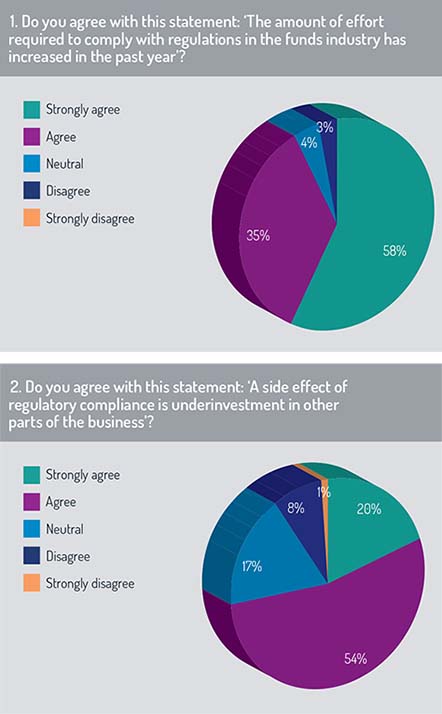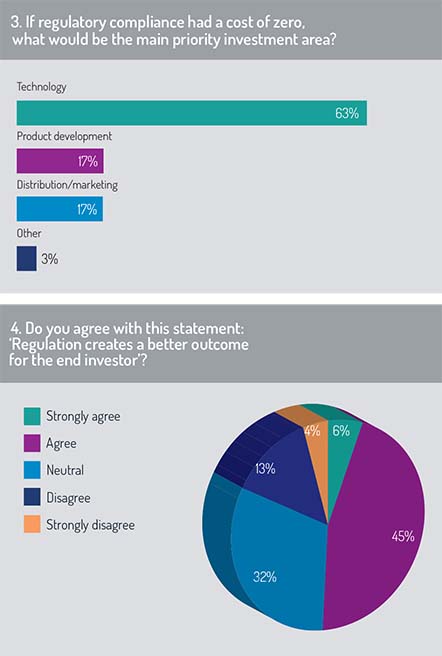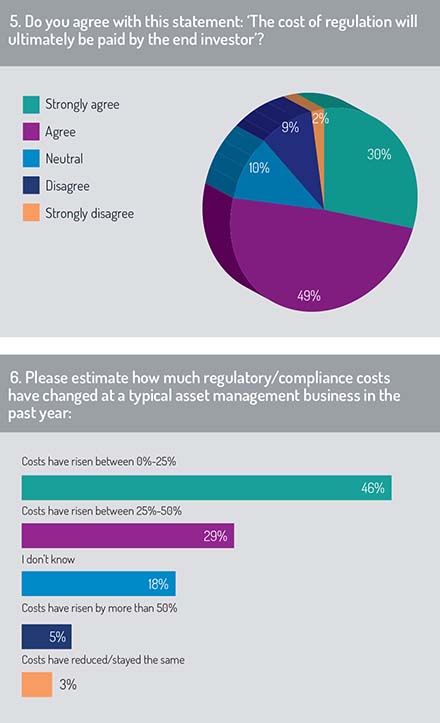It is now ten years since the global financial crisis of 2008. Of its many legacies, perhaps the most relevant, for those working in the funds business, is the vast quantity of financial services regulation that has since been implemented.
In those fraught months following the crisis, legislators naturally sought to impose order on the financial sector. As well as aiming to placate angry voters, policy-makers acted from a genuine concern that the sector had become too large, too unwieldy and too systemically important to go unchecked.
Today, few would argue the financial services sector is too lightly regulated. That is a good thing. Regulation is important to create a transparent industry that is fit for purpose and better prepared to deal with unforeseen risks. But the benefits have come at a cost. The vast quantity of employee time spent on, for instance, the second Markets in Financial Instruments Directive (MiFID II) is a resource that could have been employed on productive work elsewhere.
For this survey, Funds Global Asia and Calastone wanted to establish the funds industry’s view about the scale and challenge of regulation. Are the costs manageable? Who, ultimately, will foot the bill? And is there a way to deal with the regulatory burden more effectively, perhaps using emerging technologies such as blockchain?
On the rise
The first question in our survey sought to establish whether our respondents felt the regulatory burden was rising. The result was clear, with a total of 93% agreeing that “the amount of effort required to comply with regulations in the funds industry has increased in the past year” (of this proportion, 58% strongly agreed: see figure 1).
 This was a powerful indication of the industry’s sentiment regarding regulation. The effort required to meet regulatory requirements is felt to be increasing, with implications for budgeting, planning and resource allocation.
This was a powerful indication of the industry’s sentiment regarding regulation. The effort required to meet regulatory requirements is felt to be increasing, with implications for budgeting, planning and resource allocation.
The second question dealt with a concern often raised by industry analysts, which is that regulation has a negative effect on the opportunity/cost ratio. To put it another way, time spent on regulatory matters is time that could have been spent on other work.
We tested this assumption by asking respondents if they agreed that “a side-effect of regulatory compliance is underinvestment in other parts of the business”. A total of 74% agreed with the statement (of which 20% strongly agreed: see figure 2). Our respondents seem to recognise that regulation doesn’t come free.
We then asked respondents to imagine a fantasy world in which regulation was free. In other words, they were asked to suppose that the amount of time and money currently spent on compliance was suddenly available for other purposes. What should it be spent on?
Nearly two-thirds said technology would be the main investment area (see figure 3). In contrast, 17% said product development and the same proportion opted for distribution or marketing.
 If our respondents are right, regulation appears to be in tension with technology. There is a pent-up appetite for technology investment that companies are not acting upon because regulatory demands are swallowing their resources. This situation does not seem optimal.
If our respondents are right, regulation appears to be in tension with technology. There is a pent-up appetite for technology investment that companies are not acting upon because regulatory demands are swallowing their resources. This situation does not seem optimal.
A fruitful area of research in future would be to establish which types of technology are seen to be a priority – and what asset managers would hope to achieve with that technology investment.
Who wins?
The previous results established that our respondents believe regulatory demands are rising. But what about the supposed beneficiaries of these compliance efforts – are the industry’s customers being well served? We asked respondents if they agreed that “regulation creates a better outcome for the end investor”. More than half of respondents (51%) said they thought regulation created a better outcome for the end investor (of which 6% held the view strongly: see figure 4). About a third of respondents indicated that they were neutral and a total of 17% disagreed.
The results are hardly overwhelming, and there are clearly a number of people in our survey who did not think regulation was bringing benefits to the people it ought, ultimately, to help; that said, there was not as much cynicism as might have been feared. We think this finding indicates a reasonable level of support for legislators’ efforts.
 However, there was a refreshing honesty revealed in the answer to the next question, which asked respondents if they thought that “the cost of regulation will ultimately be paid by the end investor”. A total of 79% indicated that they thought the end investor would ultimately pay the regulatory costs (of which 30% held the view strongly: see figure 5).
However, there was a refreshing honesty revealed in the answer to the next question, which asked respondents if they thought that “the cost of regulation will ultimately be paid by the end investor”. A total of 79% indicated that they thought the end investor would ultimately pay the regulatory costs (of which 30% held the view strongly: see figure 5).
This was a decisive result and one of the clearest demonstrations of the way financial industry regulation is seen to be a trade-off. For the end investor, regulation is meant to promote transparency and reduce risk, but, according to our respondents, the implementation of the rules will lead to more expensive products, which is hardly what regulators want.
How much have regulatory costs increased? According to 46% of our respondents, costs have risen by up to 25% in the past year. A further 29% said costs have grown by between 25%-50% in the same period (see figure 6). Only 3% of our respondents said their regulatory costs had fallen or stayed the same.
©2018 funds europe





